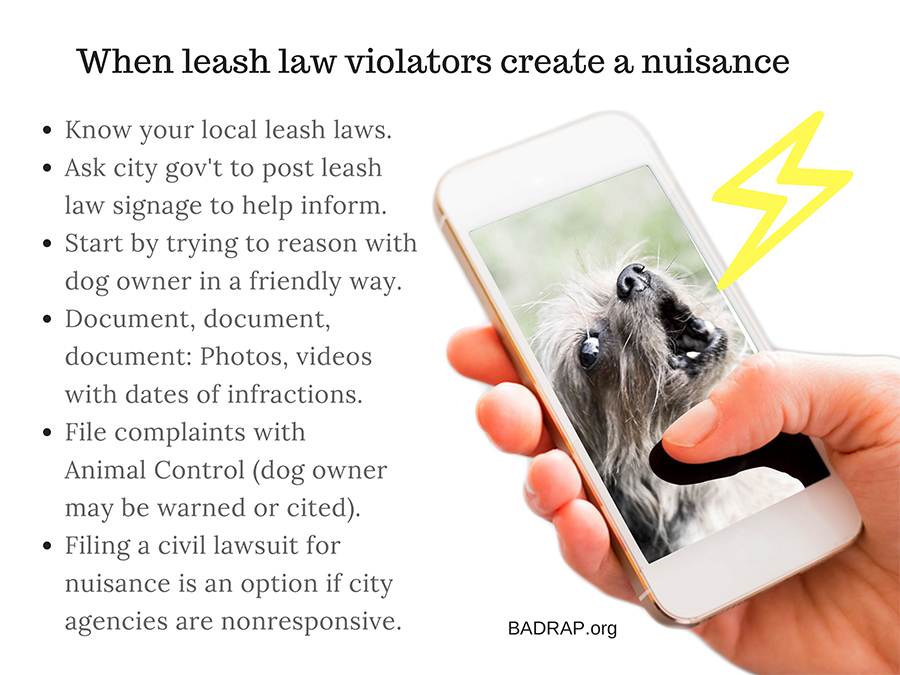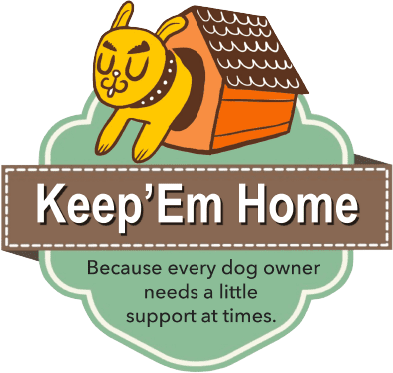Dog Law & Dog Owner Rights
Practice DEFENSIVE DRIVING During this Time of Breed Scrutiny
While most people who read our website are responsible and conscientious, it helps to stay familiar with your local animal control laws and rights as a dog owner. Here are a few tips on how to avoid trouble and protect your dog from haters and potentially negative experiences.
Leash Laws Are a Dog’s Best Friend
Off leash dogs that menace our pets is one of the biggest complaints we hear from pit bull owners especially. Not only is it the law, but if your dog is on-leash when another dog approaches him off leash, you and he will NOT be in trouble if a scuffle ensues because you obeyed the leash laws. Make sure your leash is 6 feet long or less; not one of those long-lines or horrible flexi-leads. However, If both dogs are off-leash and get into a fight, even if your dog didn’t start the trouble, you’ll likely to be blamed for it simply by virtue of him being a pit bull. It’s not fair, but it’s the reality we’re facing right now. So, when you’re in public places, practice your defensive driving and keep that leash on.
Carry Your Cellphone on Walks
It can help to capture images of off leash, uncontrolled dogs that may be menacing your pet. Usually people will honor a friendly request to leash their dog, but if they refuse, and if their dog is putting your dog at risk, phone your local police and/or Animal Control for assistance and take a photo to document the situation.
“Sorry! We’re in Training Right Now!”
This is a BIGGIE: Don’t allow nose-to-nose greets with unknown dogs they meet on the streets. In general, these types of greetings are a very challenging way for dogs to meet and a sure bet way to set the wrong two dogs up for failure. Not to mention, they’re just plain rude in dog language. If someone insists on having their dog rush up to meet yours, just hold out your hand, step in front of your dog, smile widely and say, “Sorry! We’re in training right now!” or even “Stop! My dog has kennel cough!” … a white lie that tends to work. Don’t be shy – It’s our responsibility as dog owners to protect our pets from potentially dangerous situations. It’s perfectly OKAY for your dog not to meet every dog she encounters. All dogs are not meant to be best buddies and that’s just fine.
Allowing nose-to-nose greets with strange dogs can create leash frustration, which can escalate into leash aggression. It also encourages your dog to yank you towards any dog he sees. Once he learns this isn’t an option for him anymore, you can enjoy the calm that comes from better manners.
There is nothing to be gained by allowing dogs that don’t know each other to rush up and greet. In fact, you have everything to lose if your dog meets the wrong dog and a greeting goes south.
Complete Obedience Classes and get a CGC
There’s nothing like a well-behaved pit bull to convert and impress the most stubborn breed critics. And, of course those great manners will help if you and your dog ever do find trouble with a landlord, neighbors, or local animal control especially if you’ve earned a CGC (Canine Good Citizen Certificate). This certification demonstrates that you’re a committed and responsible dog owner.
Avoiding Problems with Small Dogs
Uncontrolled small dogs that rush and provoke your dog is a common complaint. The best defense is teaching your dog a good ‘Leave it!’ command for times when you’re both rushed, while you look for a way to keep the dogs apart. You may need to pick your dog up and out of the path of the small dog. Some large breed dog owners will carry pea gravel and toss it at offending dogs to scare them into a different direction. As part of your training, teach your pet to IGNORE small dogs that he doesn’t know, no matter what the situation is. This is easier said than done, but a good goal nonetheless.
Be a Social Butterfly Around Town
The more people know and love you and your dog, the less likely others will be able to make a stink about her. Introduce her to your neighbors as she’s wearing a flowered lei and flashing that famous bully smile! Take advantage of every opportunity to show people that you’re a responsible owner with a well-behaved dog. You’d be amazed how many people may approach you and strike up a conversation about her or want to know more about the breed.
Use Caution with Visitors Who May Not Be Comfortable with Dogs

BAD RAP rescued ‘Bullet’ after he was shot in the face by a police officer who misinterpreted his friendly greeting as aggression. This highly gregarious boy was in his own yard when he was shot and required five hours of emergency surgery to survive.
Unfortunately, blocky headed dogs of every genetic mix are being injured by people who are both afraid of dogs and have access to firearms. If you sense that someone is not comfortable with dogs, keep your door closed and secure your dog in a dog crate before allowing them into your house.
IMPORTANT! Bring your dogs inside the house when you aren’t around to supervise! By law, police officers that have to enter your yard while on duty have the authority to shoot and kill your dog if they feel he may be a threat to them or impede their progress. It happens often enough to be a very real problem.
When Neighbors File False Complaints…
One of BR’s officers had the misfortune of living near troublesome neighbors who disliked pit bulls and routinely phoned the Police and Animal Control with false complaints about barking. Based on the emails we receive, this happens a lot! The answer is to document, document, document, keep the dog safely secured in the house when you’re not there, and – if the neighbors persist in false complaints – send a registered letter detailing their repeated harassments and inform them that you will be forced to file a harassment suit if they persist in their disruptive, dishonest behavior. It worked for our officer – The neighbors stopped playing tricks and she was able to go back to enjoying her home and her well-behaved pets.
But what happens if your dog does get into a fight?
If your dog does happen to get into a scuffle with another dog and the other dog is injured, who is liable will depend on different factors…
In GENERAL, during a fight:
If your dog was leashed and the other was not, the law says that you’re okay
If the scuffle happened on your property – You’re okay
If the other dog was attacking or provoking your dog and your dog was defending himself – You’re okay.
If at all possible, get things in writing and/or take pictures. If any legal action is taken, it’s best to have documentary evidence rather than self-serving statements. If your issue has escalated to the point where a petition for a dangerous dog hearing has been made, hire an attorney that specializes in animal law.
If Your Dog is Facing a Hearing
If you’ve been given notice to appear in a Dangerous Dog Hearing, start researching your local laws to learn how these hearings work. As an example, CA laws are listed here. However, please note that each city and county has it’s own slightly different version of the laws. Research your local statutes carefully and make sure you’re aware of those nuances.
In California, there are typically two levels of dangerous dogs, ‘Potentially Dangerous’ and ‘Vicious’. ‘Potentially Dangerous’ covers dogs who engage in lesser forms of misbehavior such as requiring a person to take defensive action, or attacking other dogs or livestock. ‘Vicious’ dogs are those who engage in very serious misbehavior such as attacking a person and inflicting serious injury, or continuing misbehavior after having been labeled ‘Potentially Dangerous.’ At the dangerous dog hearing, you are entitled to present evidence, including incident reports, witness affidavits, and testimony or declarations of people who know your dog, to persuade the hearing officer that your dog should not be labeled.
A former hearing officer we spoke with in cases regarding dangerous dogs in Marin and Sonoma Counties offers this advice,
“There is a lot of room for people to make amends” and offer assurances before the case ever comes before a hearing officer: Insurance, a stronger fence, a different kind of leash, [attend] training [classes], spaying/neutering, and keeping dogs inside the house instead of in the yard are all helpful offers. One might even offer different times and places for walking the dog if there is repeated trouble with a neighbor or neighbor’s dog.”
He also advises that “taking it seriously and voluntarily taking steps immediately after the incident will often head off dangerous dog or court hearings.”
If your dog does end up getting a label, these offers along with obtaining a CGC can reduce his sentence in some cases, depending on how negotiations go with your hearing officer.



